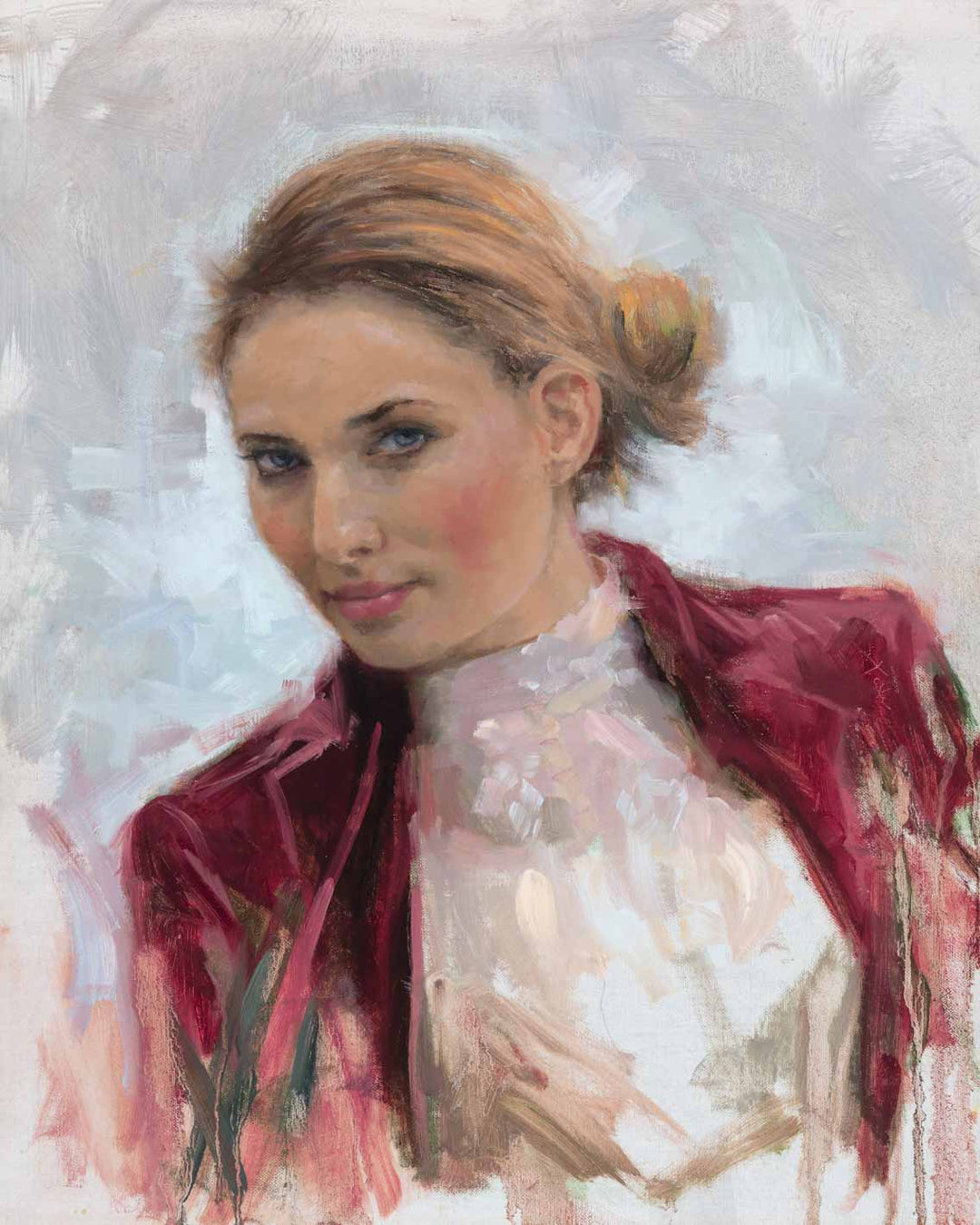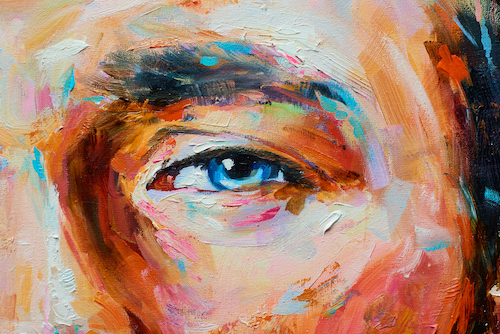Discovering Everything About Oil Paintings: An Overview to Recognizing Their Beauty and Worth
Oil paints have actually astounded target markets for centuries, providing a glimpse right into the imaginative mastery of various periods. Their rich history is linked with ingenious strategies and extensive psychological expression. Recognizing the materials and methods behind these artworks can enhance recognition. Furthermore, the market for oil paintings offers possibilities for enthusiasts and capitalists alike. As one discovers this interesting world, the question emerges: what makes an oil paint genuinely useful?
The History of Oil Painting: A Trip With Time
Oil paint has roots that date back to old times, it truly prospered during the Renaissance, when musicians discovered its convenience and abundant color possibility. Early examples can be mapped to the 7th century, with strategies advancing significantly across societies. The tool became noticeable in Northern Europe in the 15th century, particularly via the jobs of musicians like Jan van Eyck, that originated its usage for thorough realism and vibrant colors. This period noted a departure from tempera paints, permitting greater depth and appearance. As oil painting spread, it affected countless musicians, causing masterpieces by prominent figures such as Leonardo da Vinci and Rembrandt. The medium's heritage proceeds, shaping the art world well right into modern times.
Comprehending Oil Repaints: Products and Techniques
As artists explore the globe of oil paints, they encounter a varied selection of materials and techniques that define this tool. The primary elements of oil paint consist of pigments, which provide color, and drying out oils, such as linseed, that bind the pigments and facilitate application. Various additives can customize the paint's appearance and drying out time, enhancing convenience. Techniques like glazing, where transparent layers are developed, and impasto, which involves applying thick paint, enable different aesthetic effects. In addition, making use of brushes, scheme blades, and also fingers can develop one-of-a-kind textures and surfaces. Comprehending these strategies and products makes it possible for musicians to totally share their creativity and achieve the desired impact in their artwork.
The Function of Shade in Oil Paintings
Color plays a pivotal duty in oil paints, influencing both visual charm and emotional resonance. Recognizing shade theory basics, consisting of the connections between shades, can enhance a musician's capacity to communicate state of mind and ambience. Furthermore, grasping color blending methods permits higher depth and splendor in a painting's palette.

Shade Concept Basics
Understanding shade concept is crucial for musicians functioning with oil paints, as it develops the structure for producing visually interesting and harmonious structures. Color concept includes the research study of just how colors engage, the color wheel, and the relationships in between main, secondary, and tertiary shades. Artists utilize corresponding colors to enhance contrasts and develop prime focus, while analogous shades promote unity and cohesiveness within an item. Furthermore, the ideas of cool and cozy colors affect the perception of deepness and space in a paint. Comprehending these principles permits artists to adjust color successfully, guiding the audience's eye and communicating their designated message. Proficiency of color concept ultimately improves an artist's capacity to share feelings and ideas through their work.
Psychological Influence of Color
The psychological impact of shade in oil paintings plays an important function in how visitors attach and view with artwork. Shades stimulate certain sensations and state of minds, influencing the visitor's emotion. For instance, warm colors like oranges and reds can produce a sense of warmth and power, while trendy tones such as blues and eco-friendlies often evoke calmness or introspection. Artists tactically choose color combinations to improve narrative elements, directing the target market's psychological journey. The saturation and contrast of shades better amplify these effects, drawing interest and developing focus. Ultimately, the interplay of shades in oil paints not just improves their aesthetic charm however also offers as an effective tool for psychological expression, enriching the audience's experience and interpretation.
Color Combining Techniques
While lots of facets of oil paint add to the general make-up, mastering color mixing techniques is important for attaining preferred effects and depth. Color blending can be come close to with different methods, including the subtractive and additive procedures. Additive mixing involves combining shades of light, while subtractive blending relies upon pigments, where colors mix to produce new tones. Artists typically make use of a minimal combination to create unified works, understanding the partnerships between primary, second, and tertiary colors. Techniques such as glazing and scumbling better boost depth and brightness. By skillfully blending colors, a musician can evoke feelings, produce centerpieces, and accomplish a sense of realistic look, eventually elevating the paint's aesthetic and psychological impact.
Famous Oil Painters and Their Iconic Functions

Renowned for their proficiency of color and method, oil painters have developed several of the most renowned art work in background. Renowned musicians like Vincent van Gogh captivated audiences with his emotive brushwork in "Starry Night," while Claude Monet's "Perception, Sunup" laid the groundwork for Impressionism. Leonardo da Vinci's "Mona Lisa" continues to be a long-lasting icon of artistic brilliant, showcasing his ability in catching human expression. Meanwhile, Rembrandt's "The Night Watch" highlights his ingenious use of light and shadow. Various other notable figures include Pablo Picasso, that transformed modern art with his vibrant testing in works like "Les Demoiselles d'Avignon," and Georgia O'Keeffe, whose vivid representations of landscapes and blossoms assisted define American innovation. Each musician's special style contributed substantially to the oil paint landscape.
How to Evaluate the High Quality of an Oil Paint
Assessing the high quality of an oil painting involves a cautious analysis of workmanship methods, along with an evaluation oil paintings for sale of color and structure. Observing brushwork, layering, and the application of paint can expose the artist's skill level. Additionally, the interplay of shades and the overall plan of elements contribute considerably to the painting's aesthetic value.
Analyzing Craftsmanship Techniques
A meticulous assessment of workmanship strategies is crucial for establishing the top quality of an oil painting. Critics need to first check out the application of paint; thick, distinctive brushstrokes might suggest a proficient hand, while extremely consistent applications might suggest an absence of deepness. oil paintings for sale. The layering technique is likewise crucial; the presence of glazes and varied thickness can enhance luminance and complexity. Furthermore, the quality of the products utilized, such as the canvas and pigments, plays a considerable function in longevity and overall aesthetic. Attention to information in components like edges and shifts between shades reflects the musician's commitment to their craft. Inevitably, these techniques add to the painting's psychological impact and market worth, working as signs of the artist's ability and intent
Evaluating Color and Composition
While assessing the top quality of an oil paint, one must focus on the interplay of shade and make-up, as these elements are basic to the artwork's general effect. Color options can develop and stimulate feelings state of mind; therefore, the musician's combination ought to be checked out for consistency and contrast. A healthy structure guides the audience's eye and produces a feeling of unity. Musicians usually employ techniques like the rule of thirds or leading lines to improve aesthetic interest. Furthermore, the usage of light and shadow can add depth, enhancing the three-dimensionality of the painting. Eventually, an effective oil paint marries color and structure, involving the visitor and inviting a much deeper appreciation of the artist's vision and technique.
Caring for and Preserving Oil Paintings
Appropriate care and preservation of oil paintings is necessary for preserving their honesty and long life. To safeguard these artworks, it is important to show them far from direct sunshine, which can trigger fading and staining. Keeping a steady environment with regulated temperature level and moisture further help in avoiding damage. Cleaning must be done gently using a soft, completely dry towel, preventing any extreme chemicals that could harm the paint or varnish. Normal assessments for signs of wear and tear, such as flaking or cracking, are advisable. When transferring or storing oil paintings, proper padding and framework are needed to stay clear of physical damage. Inevitably, attentive care adds to the visual allure and worth of oil paints gradually.
The Marketplace for Oil Paintings: Investing and accumulating
Recognizing the market characteristics for oil paintings is vital for enthusiasts and capitalists alike. The value of these art work is influenced by different variables, including the musician's online reputation, historical significance, and current patterns. Collection agencies usually look for pieces that reverberate directly while thinking about possible appreciation in value. Galleries and public auctions function as primary locations for acquiring and selling, with costs rising and fall based on need and rarity. Buying oil paintings calls for research into the marketplace, along with an understanding of authenticity and provenance. Additionally, emerging musicians might offer chances for significant returns, while developed names can regulate high rates. Overall, a critical method to gathering can produce both visual satisfaction and economic benefits.

Regularly Asked Concerns
What Are the Environmental Influences of Oil Painting Materials?
The ecological effects of oil painting products include the launch of unstable organic compounds (VOCs), harmful waste generation, and source removal for pigments. These aspects add to air pollution and eco-friendly deterioration, increasing worries among ecologically aware musicians and customers.
Just How Do Different Canvases Impact Oil Paint Results?
Various canvases affect oil painting results considerably. Absorbency, structure, and surface top quality can change paint application, drying times, and color vibrancy. Musicians typically select certain canvases to accomplish preferred impacts and improve their artistic expression.
Can Oil Paintings Be Restored if Damaged?
Oil paintings can indeed be restored if harmed. Specialist conservators use numerous strategies to fix rips, tidy surfaces, and address discoloration, guaranteeing that the artwork preserves its initial appeal and value for future generations.
What Are the Signs of an Initial Oil Paint?
The signs of an original oil paint include visible brush strokes, appearance variations, and an irregular canvas weave (oil paintings for sale). In addition, authenticity may be validated with provenance, signatures, and the visibility of a varnish layer special to oil tools
Just How Has Innovation Influenced Modern Oil Painting Techniques?
Modern technology has actually greatly influenced modern oil painting strategies by introducing digital devices for planning, boosted products for texture and long life, and on the internet platforms for sharing and marketing art, thereby broadening artists' imaginative opportunities and audience get to. Oil paint has roots that date back to old times, it truly flourished during the Renaissance, when artists uncovered its versatility and abundant shade possibility. The psychological influence of shade in oil paints plays an important function in just how customers connect and perceive with art work. While numerous facets of oil paint contribute to the general make-up, mastering shade blending techniques is necessary for attaining desired impacts and deepness. Evaluating the high quality of an oil paint entails a careful evaluation of workmanship strategies, as well as an analysis of color and composition. While assessing the top quality of an oil painting, one should concentrate on the interplay of shade and make-up, as these elements are fundamental to the artwork's total effect.